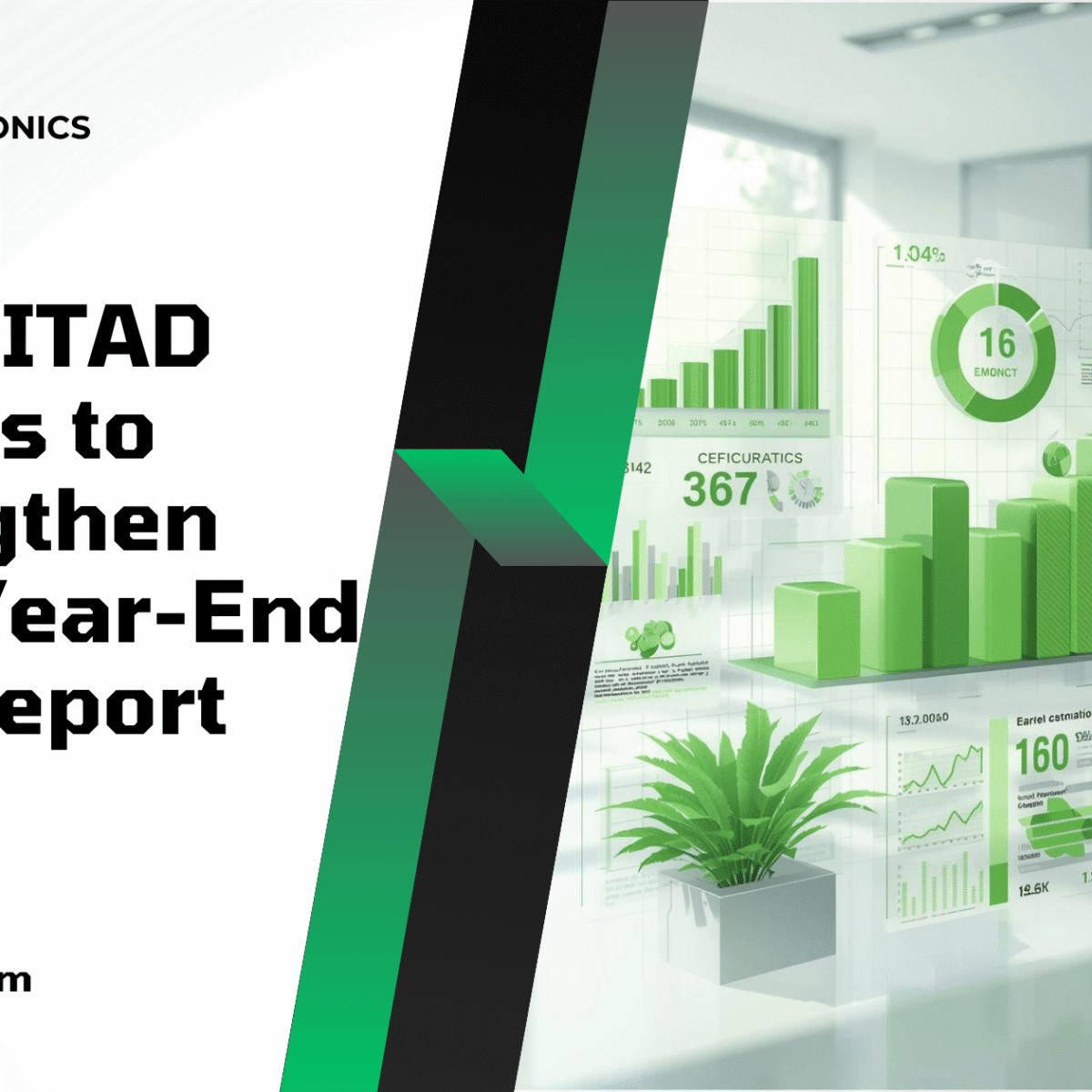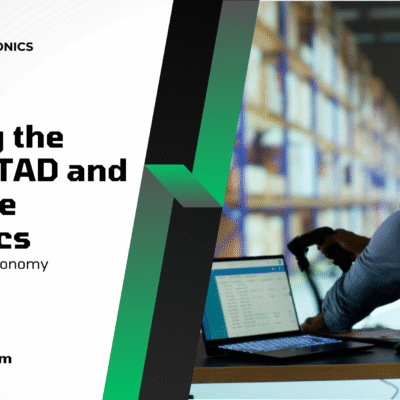Introduction
As companies finalize their year-end Environmental, Social, and Governance (ESG) reports, many overlook one of the most measurable and verifiable contributors to sustainability performance — IT Asset Disposition (ITAD).
Every retired laptop, server, and storage device represents an opportunity to advance environmental goals, document ethical governance, and demonstrate responsible data management. By incorporating ITAD metrics into your ESG framework, organizations can quantify their sustainability achievements while maintaining compliance with data privacy and recycling standards.
At IER ITAD Electronics Recycling, we help organizations transform their technology lifecycle into an accountable, measurable part of their ESG success story.
Why ITAD Belongs in ESG Reporting
Modern ESG reporting is driven by transparency and quantifiable impact. Frameworks like the Global Reporting Initiative (GRI) and the Sustainability Accounting Standards Board (SASB) now emphasize measurable data on environmental stewardship, social responsibility, and governance controls.
ITAD supports all three pillars of ESG:
- Environmental: Reducing e-waste, carbon emissions, and resource extraction through reuse and recycling.
- Social: Protecting sensitive data and maintaining ethical downstream supply chains.
- Governance: Providing certified, auditable processes through compliance with R2v3 standards and NIST SP 800-88 Rev. 1 data destruction.
By integrating ITAD metrics, businesses move from policy-based reporting to data-driven accountability — strengthening credibility with investors, regulators, and customers.
1. The Environmental Impact: Quantifying E-Waste Reduction
The “E” in ESG is where ITAD has the most visible impact. Certified recyclers document measurable outcomes that directly support carbon, waste, and circular economy goals.
Key Environmental ITAD Metrics
- E-Waste Diversion Rate: Percentage of retired assets diverted from landfill through reuse or recycling.
- Carbon Emissions Avoided: CO₂ savings achieved through equipment reuse or material recovery.
- Material Recovery Data: Pounds or kilograms of metals and plastics reclaimed.
- Hazardous Waste Prevention: Safe handling of lead, mercury, and lithium components.
According to the EPA, recycling 1 million laptops saves energy equivalent to powering more than 3,500 U.S. homes per year. Reporting these outcomes in your ESG submission demonstrates progress toward carbon-neutral and waste-reduction targets.
2. The Social Component: Data Protection and Ethical Stewardship
ITAD also supports the “S” in ESG — ensuring responsible data management and protection of stakeholder information. Improper device disposal remains a leading cause of preventable data breaches.
Certified ITAD practices demonstrate a company’s commitment to digital responsibility, especially under privacy frameworks like GDPR, CCPA, and FERPA for educational institutions.
Best Practices for the Social Pillar
- Adhere to NIST SP 800-88 Rev. 1 for data sanitization.
- Require Certificates of Data Destruction tied to asset serial numbers.
- Maintain complete chain-of-custody documentation for all retired devices.
- Partner with an R2v3 Certified ITAD provider that ensures ethical labor and verified downstream processing.
These actions reduce data-related ESG risks and highlight social accountability in annual reports.
3. Governance: Verifiable Oversight and Compliance
Strong ESG performance depends on verifiable governance practices. ITAD delivers this through certified audits, documentation, and traceable data trails.
When you partner with an R2v3 Certified recycler, your ITAD program benefits from third-party oversight, ensuring:
- Proper environmental management systems are in place.
- Secure logistics and transport controls prevent data exposure.
- Comprehensive audit records meet internal and external compliance standards.
By documenting these processes in ESG disclosures, organizations show measurable commitment to responsible governance and ethical resource management.
4. How to Capture and Report ITAD Metrics
To make ITAD a meaningful part of ESG performance reporting, your team should implement structured data collection and documentation practices.
Step-by-Step Process
- Start with an IT Asset Inventory: Identify which devices qualify for reuse, resale, or recycling.
- Track by Category: Measure each device disposition type (reused, recycled, destroyed).
- Record Environmental Outcomes: Capture energy savings, emissions reduction, and material recovery.
- Validate with Certificates: Collect Certificates of Destruction and chain-of-custody logs for governance.
- Integrate with Reporting Frameworks: Align your results with GRI indicators such as 301-3 (Reclaimed Products) and 306-2 (Waste by Disposal Method).
When ESG reports include ITAD outcomes, organizations can demonstrate tangible sustainability progress supported by independently verified data.
5. Sustainability Metrics to Include in Your ESG Report
| Metric | What It Measures | Example Output |
| E-Waste Diversion | % of devices reused or recycled | 94% landfill diversion |
| Carbon Avoidance | CO₂ savings from reuse | 18,000 kg avoided |
| Resource Recovery | Material reclaimed | 250 lbs metals recovered |
| Data Security | Verified drives wiped | 2,200 drives sanitized |
| Compliance | R2v3-certified processing | 100% certified channels |
Including these figures helps quantify the impact of ITAD efforts and communicates sustainability achievements with precision and credibility.
6. The Circular Economy Connection
Modern ESG frameworks emphasize the circular economy — keeping materials in use for as long as possible through repair, refurbishment, and recycling.
ITAD plays a central role by extending asset lifecycles, recovering materials, and reducing dependency on new manufacturing. This directly supports corporate sustainability goals and Scope 3 emission reductions under the Greenhouse Gas Protocol.
When organizations include ITAD performance in circular economy disclosures, they position themselves as leaders in sustainable innovation and responsible resource management.
7. Case Example: Turning ITAD Data into ESG Results
A large technology services firm implemented an enterprise-wide ITAD program to support its sustainability reporting goals. Over a 12-month period, the organization:
- Processed 7,800 retired devices through an R2v3 Certified ITAD provider.
- Documented 10.4 metric tons of carbon offset through reuse.
- Achieved a 96% landfill diversion rate across multiple sites.
- Received comprehensive Certificates of Destruction for every device.
These results were included in the company’s annual ESG report, enhancing its GRI metrics and improving investor confidence through data-backed performance.
8. Building an ITAD-Driven ESG Strategy for 2026
To prepare for the next reporting cycle, organizations should formalize the connection between ITAD and ESG tracking. Key actions include:
- Integrate ITAD performance into corporate sustainability dashboards.
- Require R2v3 certification from all recycling vendors.
- Standardize quarterly reporting on e-waste and carbon offsets.
- Collaborate with internal ESG teams to align ITAD data with global standards (GRI, SASB, CDP).
- Communicate ITAD results in sustainability marketing and investor materials.
By embedding ITAD into your ESG governance framework, you transform asset disposition into a measurable component of corporate responsibility.
FAQs: ITAD and ESG Reporting
Q1: Why include ITAD in ESG reporting?
Because it provides measurable, certified data that strengthens environmental and governance disclosures.
Q2: How are ITAD metrics verified?
Through R2v3-certified processes, Certificates of Destruction, and traceable chain-of-custody documentation.
Q3: Can ITAD data be used in audited ESG reports?
Yes. Certified recyclers supply validated metrics that align with international reporting standards.
Q4: How does ITAD support Scope 3 emissions tracking?
By quantifying emissions avoided through reuse and recycling, contributing directly to Scope 3 reduction targets.
Conclusion
Your ITAD program can be one of the most powerful contributors to your organization’s ESG performance. With certified data, transparent reporting, and measurable sustainability metrics, you can demonstrate real progress in environmental stewardship, ethical governance, and secure data management.
At IER ITAD Electronics Recycling, we help businesses integrate IT asset disposition into their ESG frameworks — delivering R2v3-certified compliance, measurable sustainability results, and audit-ready reporting.➡️ Contact IER today to learn how your ITAD metrics can strengthen your 2025 ESG performance and prepare your organization for a sustainable 2026.





